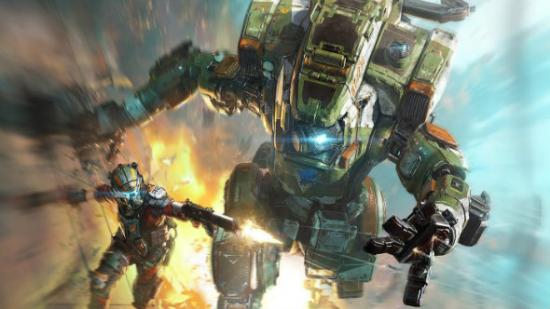No one would have believed that in the last months of the year 2016, critics across the globe would be rabidly tweeting about how good Titanfall 2’s campaign is. From effusive adjectives such as ‘incredible’ to seemingly outlandish statements like ‘best single-player shooter ever made’, the internet is currently alight with praise for Respawn’s first shot at a narrative solo campaign. And those folks aren’t wrong: Titanfall 2’s story mode really is something special.
Not convinced that Titanfall’s for you? Try one of these other brilliant PC shooter games.
There are plenty of reviews out there that will expand on these ideas, but I want to dive deeper into what makes Titanfall 2 so good. As such, this article will discuss various details up to the end of the Effect and Cause mission. I’ll keep clear of plot spoilers, but there will be discussion of mechanical developments some players may prefer to experience blind.
Titanfall’s core formula is all about exploring contrast. As a pilot you are swift and agile, while Titans make you slower but deadly. Both forms offer an incredibly different experience. Pilots dart between walls as they jetpack above cities like machine gun-toting hornets, while Titans brawl in the streets below; mechanical goliaths packing weaponry bought from a James Cameron yard sale. Swapping from one form to another opens up opportunities, but closes the door on others. Success relies on mastering and combining both guises.
Titanfall 2’s campaign explores that contrast in a new way. Where multiplayer is open-ended and asks you to figure out which form is required at any given moment, single-player is more prescribed. The narrative either sees you with your Titan, in which case you generally want to be strapped in, or separated from it. You can, and indeed will, switch it up when you can, but there are obviously Titan and pilot designated areas.
What this means is that the level design can be more tightly attuned to what the narrative knows you’ll be doing. Several missions into the game you’ll explore, sans Titan, a functioning production line where prefabricated housing complexes are built. As the assembly line rolls deeper into the facility, the concrete bases are fitted with furniture and cupboard units, stairs and upper floors. Each new component is a launch pad to double jump from, allowing you to reach higher catwalks and sniper vantage points. As the machines flip components and crane them away, complex parkour routes are momentarily created. It’s a work of platforming mastery.
During your tour of the factory, a variety of mechanical and fleshy enemies assault you. The parkour may be the pilot’s star attraction, but weapons come a close second. They’re a collection of incredibly punchy, industrial death machines. The Mozambique, a pistol/shotgun hybrid, fires incendiary shells that burn with a visibly intense heat. Then there’s my favourite, the L-Star: a laser that causes enemies to shudder before erupting like blood-filled water balloons. (No, you can’t personality profile me based on that.)
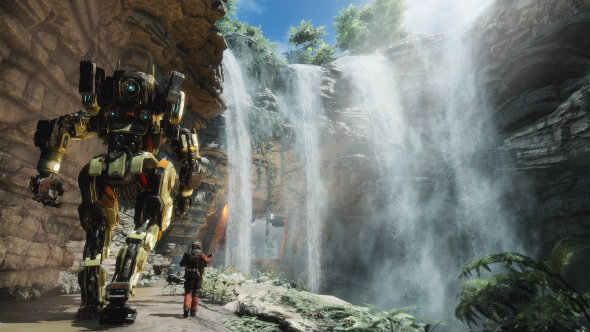
The combat reminds me of action sequences from the film District 9, an effect that’s certainly heightened when controlling the Titan. With vortex shields that catch bullets and hurl them back at enemies, and a mechanical punch that reduces men to red mist, the influence of Neill Blomkamp’s sci-fi is certainly felt.
The violence is contrasted by moments of humour. Titanfall 2 uses a similar tonal structure to many buddy action films, with the story possessing a certain amount of gravity, but the interactions between characters oft peppered with quips, one-liners, and gentle gags.
Aside from the war story, Titanfall 2 is a tale of a man and his robot: Cooper and BT. This time around Titans are more than just walking tanks; they have AI that allows them a certain level of sentience. The limitations of that is where the humour is often found, with BT consistently failing to understand Cooper’s use of sarcasm. A familiar narrative beat, sure, but one that offers a refreshing change from the po-faced stories of other wartime shooters.
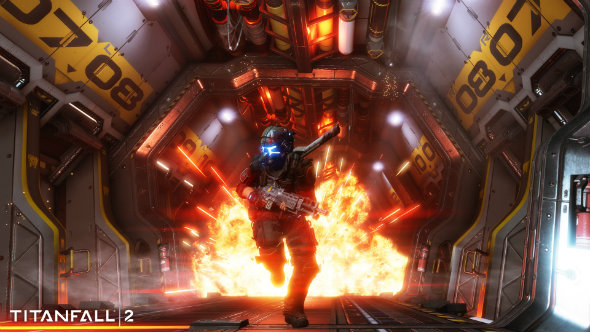
Conversation with BT comes in the form of dialogue options, which is a surprisingly welcome addition to a pacey FPS. You only ever have two options, but they add a feeling of engagement. The story isn’t just noise that happens in your character’s earpiece; it’s something you’re a contributing part of. Responses won’t have you choose between moral extremes, but a timer stolen from Telltale does add a feeling of increased importance to conversation. Dialogue choices occur while you’re still running and gunning, meaning there’s no RPG stand-still-and-have-a-conversation moments to disrupt the game’s rapid flow.
These various elements add a great amount of texture to the campaign. Intensity is generated through the chaining together of these key components – parkour, violence, a slow-motion escape from certain death – and swapping between them at just the right moment. It’s done with a level of confidence that brings the masterworks of Valve to mind.
The time spent in Titanfall 2’s assembly line environment is more than enough to convince of its star qualities, but it’s the Effect and Cause mission that really demonstrates Respawn’s understanding of what makes their game unique. Once again it’s about contrast, but rather than being the opposites of pilot and Titan, the level deals with past and present.
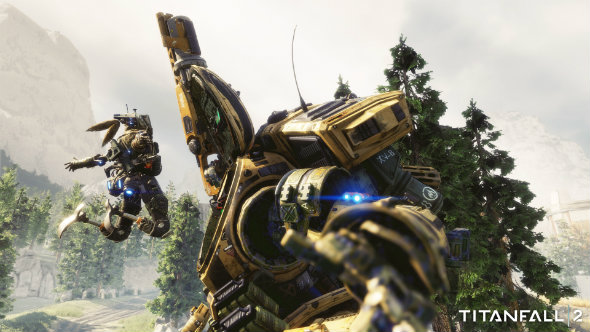
Yes, Titanfall 2 uses time travel as a core component of one of its missions. The mechanic could be central to an entire game (and actually is; see Singularity), but Effect and Cause sees a time jump gadget become a temporary power. A click of the middle mouse will instantly warp the environment between the then and now, providing a new tool for solving level puzzles. Stuck in a room with overwhelming enemies? Warp to the past where they won’t be around, reposition yourself, and hop back to the present to get the drop on them.
As the mission progresses, so do the demands of your time manipulation. Parkour puzzles require you to be constantly hopping backwards and forwards in both space and time, making for really intense bursts of complex platforming.
Then there’s the visual contrast; the area you explore in the past is a glittering, high-tech facility staffed by soldiers and droids. The present sees the same building turned into a burning wreck, populated by the rusted remains of robots and hungry local wildlife.
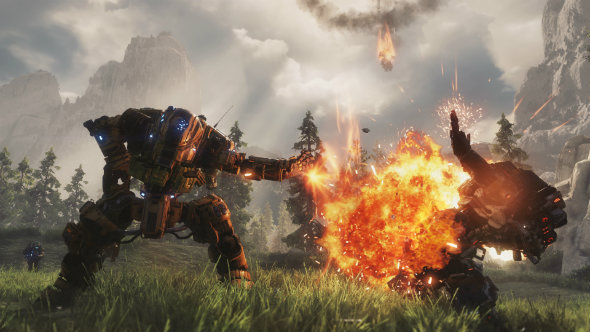
Effect and Cause’s finale sees you saddle up in BT for a big scrap with a couple of the game’s heaviest Titan models. It’s a set piece that has you both diving in and out your Titan and leaping through time. In the present the enemy Titans are rusted and brittle, but you’ll need to warp back to when they were at their prime in order to access the controls you need. It’s one of the smartest and most enjoyable moments of any shooter campaign.
Released in between Battlefield 1 and Call of Duty: Infinite Warfare, it would be easy to dismiss Titanfall 2 as the ‘other’ shooter of 2016. Despite Respawn’s pedigree as the former inventors of Call of Duty, their lack of mainstream success with the first Titanfall already puts them on a back foot. But make no mistake: as far as campaigns go, Titanfall 2 is as good as it gets. It’s a campaign that deserves to be remembered among the FPS greats.
Convinced? Remember to check out our Titanfall 2 PC port review before you install!
